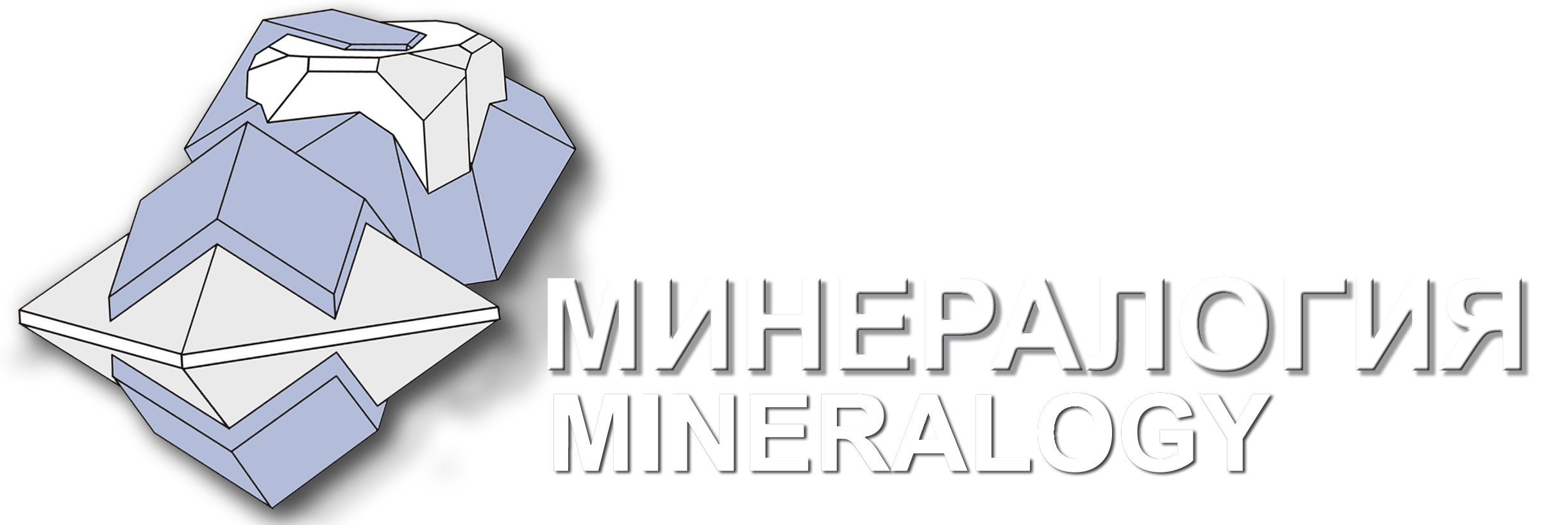The role of halogens and sulfur in apatite for evaluation of Cu-Ni, Fe-Ti AND Au ores In late palaeozoic gabbroids of the Wst Magnitogorsk zone (South Urals)
V.V. Holodnov, D.N. Salihov, E.S. Shagalov, E.V. Konovalova, I.R. Rahimov
Late Paleozoic gabbroids of West Magnitogorsk area were classified according to correlations between halogens and sulfur in apatites. For Hudolazovsky complex specialized in Cu-Ni mineralization apatites with the highest content of sulphate sulphur are common. Specialization of later gabbro-diorites of Hudolazovsky complex for apatite-ilmenite mineralization was detected. Apatites in gold-bearing Ulugurtausky dike complex have moderately high chlorine content and low content of sulphate sulfur. The appearance of late apatite-rich calcite segregations characterizes local late-magmatic fluid composition. Basayevsky complex is not similar to Utlyktashsky according to correlations between halogens and sulfur in the apatites, it tends to be closer to Hudolazovsky complex due to the presence of sulfur. It is shown that conformal lopoliths of Utlyktashsky complex along with skarn-magnetite mineralization have potential of ore-bearing in impregnated titanomagnetite-ilmenite ore. The facial conditions of rock crystallization were characterized by the composition of amphiboles. It was concluded that Late Paleozoic continental-margin intrusive complexes of Hudolazovsky basin are related to the evolution of a single mantle magmatic source, plume possibly.
Figures 7. Tables 3. References 18.
Key words:apatite, gabbroids, halogens, sulfur, mineralization.
V.V. Holodnov, Zavaritsky Institute of Geology ang Geochemisyry UB RAS, Ekaterinburg, holodnov@igg.uran.ru
D.N. Salihov, Institute of Geology USC RAS, Ufa,
E.S. Shagalov, Zavaritsky Institute of Geology ang Geochemisyry UB RAS, Ekaterinburg,
E.V. Konovalova, Zavaritsky Institute of Geology ang Geochemisyry UB RAS, Ekaterinburg,
I.R. Rahimov, Institute of Geology USC RAS, Ufa
- Знаменский С.Е. Структурные условия формирования коллизионных месторождений золота восточного склона Южного Урала. Уфа: «Гилем», 2009. 348 с.
- Иванов К.С. Основные черты геологической истории (1.6–0.2 млрд лет) и строения Урала. Дис. д-ра геол.-мин. наук. Екатеринбург. 1998. 252 с.
- Нечеухин В.М., Душин В.А., Оловянишников В.Г. Палеогеодинамические ассоциации и тектоно-геодинамические элементы Урало-Тимано-Палеоазиатского сегмента Евразии: объяснительная записка к геодинамической карте масштаба 1 : 2500000. Екатеринбург: УрО РАН; УГГУ, 2009. 158 с.
- Пучков В.Н. Геология Урала и Приуралья (актуальные вопросы стратиграфии, тектоники, геодинамики и металлогении). Уфа: ДизайнПолиграфСервис, 2010. 280 с.
- Рахимов И.Р., Салихов Д.Н., Пучков В.Н., Холоднов В.В., Ронкин Ю.Л. Башкирский Sr-Nd возраст завершающей стадии коллизионного магматизма Западно-Магнитогорской зоны Южного Урала // Доклады АН. 2014. Т. 457. № 4. С. 445–450.
- Салихов Д.Н., Яркова А.В. Нижнекаменноугольный вулканизм Магнитогорского мегасинклинория. Уфа: УНЦ УрО РАН, 1992. 138 с.
- Салихов Д.Н., Беликова Г.И., Пучков В.Н., Эрнст Р., Холоднов В.В. и др. Никеленосный интрузивный комплекс на Южном Урал // Литосфера. 2012. № 6. С. 66–72.
- Салихов Д.Н., Мосейчук В.М., Холоднов В.В., Рахимов И.Р. Каменноугольный вулкано-интрузивный магматизм Магнитогорско-Богдановского грабена в свете новых геолого-геохимических данных // Литосфера. 2014. № 5. С. 33–56.
- Скарново-магнетитовая формация Урала: Средний и Южный Урал. Свердловск: УрО АН СССР, 1989. 212 с.
- Тевелев А.В., Кошелева И.А., Попов В.С., Кузнецов И.Е., Осипова Т.А., Правикова Н.В., Густова А.С. Палеозоиды зоны сочленения Восточного Урала и Зауралья / Тр. лабор. геологии складчатых поясов (вып. 4). М.: Геологический ф-т МГУ, 2006. 300 с.
- Ферштатер Г.Б. Магнитогорская габбро-гранитная интрузия. Свердловск: УНЦ АН СССР, 1966. 143 с.
- Ферштатер Г.Б. Петрология главных интрузивных ассоциаций. М.: Наука, 1987. 232 с.
- Ферштатер Г.Б., Холоднов В.В. Прибавкин С.В, Бородина Н.С., Бочарникова Т.Д. Рифтогенный магматизм и оруденение Южного Урала // Геология рудных месторождений. 2005. Т. 47. № 5. С. 421–443.
- Холоднов В.В., Бочарникова Т.Д. Режим галогенов и эволюция крупных железоносных рудномагматических центров в условиях надсубдукционного рифтогенеза (Магнитогорская мегазона, Ю. Урал) // Эндогенное оруденение в подвижных поясах (XIII Чтения памяти А.Н. Заварицкого). Екатеринбург: ИГГ УрО РАН, 2007. С. 79–83.
- Холоднов В.В., Бушляков И.Н. Галогены в эндогенном рудообразовании. Екатеринбург. 2002. 390 с.
- Язева Р.Г., Бочкарев В.В. Геология и геодинамика Южного Урала. Екатеринбург: Изд-во УрО РАН, 1998. 203 с.
- Hammarstrom J.M., Zen E-An. Aluminium in hornblende: an empirical igneous geobarometer // American Mineralogist. 1986. V. 71. № 11/12. P. 1297–1313.
- Otten M.T. The origin of brown hornblende in the Artfjallet gabbro and dolerites // Contributions to Mineralogy and Petrolоgy. 1984. V. 86. Р. 189–199.
МINERALOGY № 3 2015
